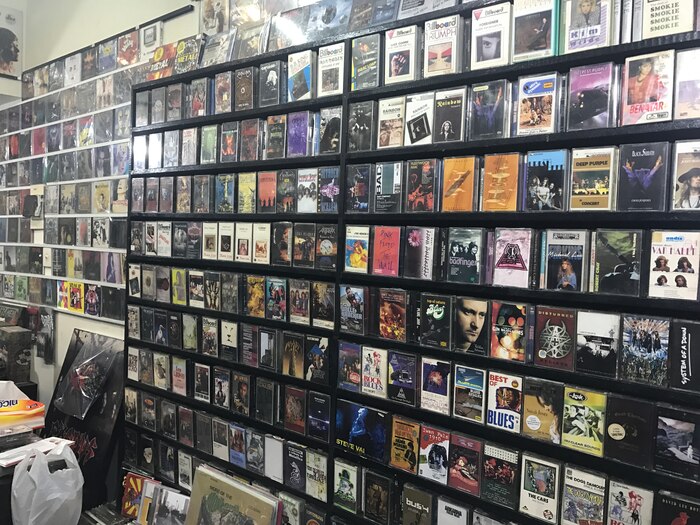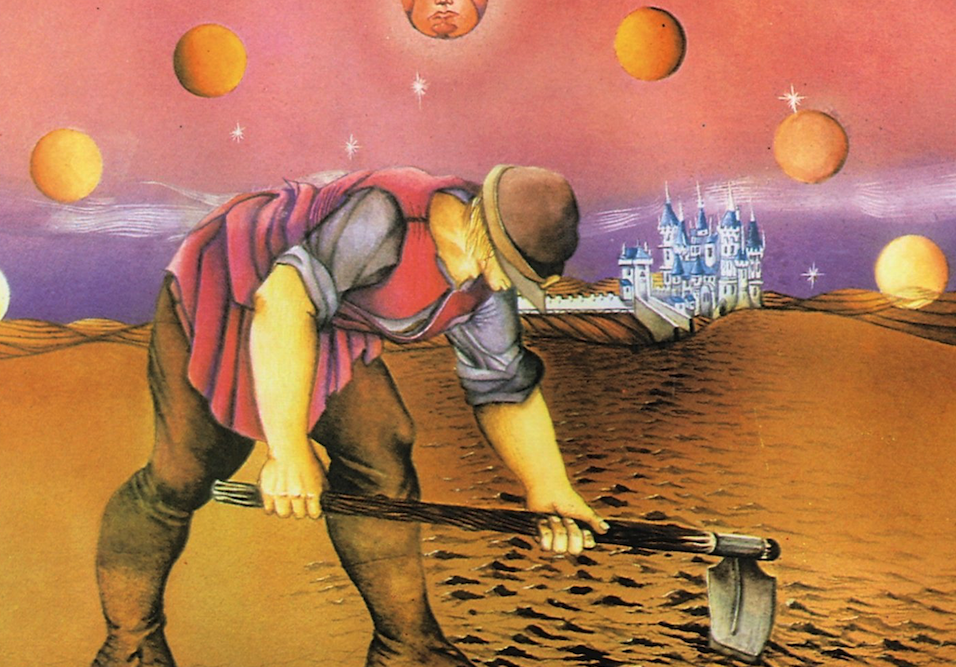Yess Records, Indonesia’s Influential Bootleg Cassette Label
Stanley Widianto on the lasting influence of Indonesia’s top purveyors of prog rock

From 1975 to 1988, in the city of Bandung, Indonesia, the output of a record label called Yess Records was responsible for inspiring a generation of Indonesian listeners to pursue a musical life with progressive rock at the center. However, calling Yess a “label” doesn’t necessarily compute with its day-to-day operations: Their output was composed almost entirely of bootlegs, created by recording existing releases onto a C-60 or C-90 Maxell cassette.
For the three owners – A Fung, Ian Arliandy and Ihok, about whom little is known – audio quality was a high priority, even if following international copyright law was not. But with a total of 731 releases over Yess’s lifespan, the cassette brokers played an essential role in introducing its local customers to truly weird music – Marillion, Pendragon, Tangerine Dream, King Crimson and, of course, their namesake Yes among them – with the bluish-green covers of their cassettes still sitting on the shelves of unassuming record shops or nostalgic collectors throughout Indonesia.
Initially founded between 1972 and 1973 by A Fung under the name Diamond Records, it wasn’t long before Ian Arliandy was invited in as a curator. While A Fung primarily managed the re-recording process and Ihok took care of the store’s day-to-day business, Arliandy tended to a specific curatorial vision: “I really want to make [Yess] all about progressive music. My mission was to spread this kind of music. The more unintelligible progressive music gets, the better,” he once said.
Generally, the musical interests of Indonesians throughout the 1970s didn’t really expand beyond classic rock – the Led Zeppelins and Deep Purples of Western pop culture – or dangdut, the popular rhythmic music influenced by Arabic and Malay structures. Due to tight regulations under the authoritarian government, television was nothing more than a channel of propaganda and print publications needed a specific permit and, as a result, music didn’t travel fast. For Yess, the word “alternative” was commonly tossed around: their brand of prog and avant-garde music was the alternative to pop, just as cassettes were the alternative to rare and expensive records.
“If it hadn’t been for Yess, I wouldn’t have known all those weird bands,” recalls Muhammad Asranur, a music photographer and keyboardist with the indie rock band Efek Rumah Kaca (who put out a prog-influenced record in 2015 called Sinestesia). Yess meant so much to him back when he was a teenager that he’d ask his parents to buy their cassettes in droves. It wasn’t until Asranur left for the States in 1991 that he would discover finding out about progressive music was a lot easier there.
Yess were more than just purveyors of prog, though, and its restless work re-recording choice imports from the US, UK, Netherlands, Singapore and beyond became less constrained by genre as their output increased. “[Yess] had its own character,” says Yuka Narendra, a researcher who wrote a study on Yess. “The prog fans over there [in the West] probably wouldn’t go for ECM’s jazz records, like Pat Metheny or Lyle Mays, but here they did.” Fans of Yess, he believes, were consumers of a genre called, well, Yess – a genre unto itself. “The first time I heard Yes’s Relayer record, I fell in love with the synthesizer. So I started listening to Yellow Magic Orchestra, Ryuichi Sakamoto [through Yess]” he continues.
At the time, everything was pirated – nothing was official.
For Narendra, Yess represented “cheap modernity,” an affordable opportunity for listeners to access contemporary Western pop culture – although the operation did turn a profit, it was not incredibly lucrative for its owners. Today’s Spotify algorithms, he says, were yesterday’s giddy Yess employees telling buyers – mostly students in small cities such as Bandung, Sukabumi, Madiun and Banda Aceh – to listen to this. Yess trafficked in the earnest desire to piece things together, to complete the catalog – they would always try to put out a discography of a certain band and occasionally even throw in some best-of compilation – which likely didn’t actually exist in a given band’s official canon.
“At the time, everything was pirated – nothing was official,” says Arman Wahyudi, the owner of the record shop Jatinegara Musik, located in the basement the Blok M Square mall in Jakarta. But piracy, when it comes to Yess and its fellow recorders/labels, was actually anything but illegal, since Indonesia was not party to an international treaty such as the Berne Convention, the UN’s agreement on copyright protection and royalties distribution, until 1997. According to Narendra, the country did crack down on the piracy of records by Indonesian musicians, but it couldn’t care less about the distribution of cassettes from the West. In fact, look inside a Yess cassette today and you’ll find a government-approved tax sticker and an official serial number issued by ASIRI, Indonesia’s Recording Industry Association – Yess never neglected to pay their taxes even on such grey-market stock.
This cheap modernity came to a staggering halt after Bob Geldof, Live Aid’s organizer, found in 1985 that over 1.5 million cassettes containing the recordings of the fundraising concerts were produced in Indonesia and subsequently distributed to Southeast Asian countries, the Middle East and Italy. According to Billboard, Geldof’s anger got ugly as he was “prepared to urge Australia to curtail its large tourist trade in Indonesia.” By 1988, and only at the risk of such international exposure, copyright laws began to be enforced, with cassettes around the country, of Live Aid or otherwise, forced to be withdrawn from the market.

At the time, Yess wasn’t the only faux-label in the country; it wasn’t even the first one. There were also Team (who had a featured release, titled Rock Line, featuring Metallica, Motörhead and more), Mona Lisa, Billboard, Aquarius and Apple. Thanks to these groups, in addition to the musical legacy they left, people were purchasing albums with lyrics that probably taught them the English language, a major selling point for many buyers. At least until 1988, anyway.
“I personally don’t care about moral issues,” Narendra says emphatically. “That was the only way we could keep up with the world’s popular culture; we could actually compete. Where do you think our musicians get our references from? Screw morals!”
The simple truth is that for these listeners, there was no other way. “I think most Indonesians at the time didn’t realize that those were pirated cassettes. Whether or not it was moralistic, they already did the service of spreading information about bands worth hearing. Cassettes were cheap. How many Indonesians could afford to buy vinyls at that time?” says Asranur.
The legacy Yess ultimately left in its wake can seem minuscule today: A love for progressive rock worn as a badge of honor, or piracy as a normalized mode of acquisition. But Yess did speak to an era in Indonesian musical history that was left wanting over a dearth of accessibility by offering a rare chance to explore. For 13 years, Yess embodied a certain spirit that would never have been thought of if it hadn’t been for someone’s curiosity: the spirit to make something out of nothing.

